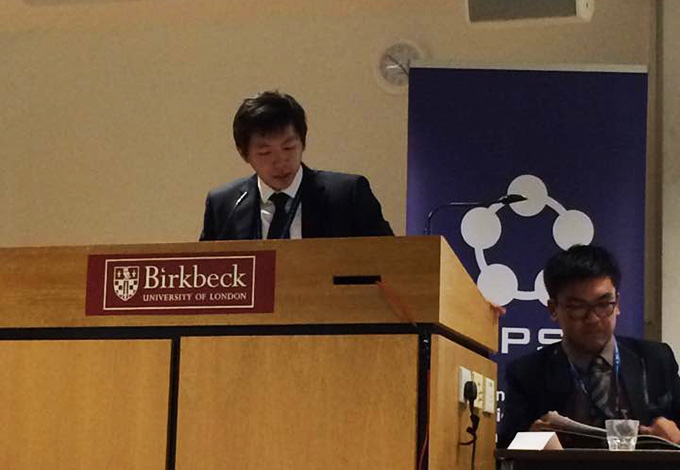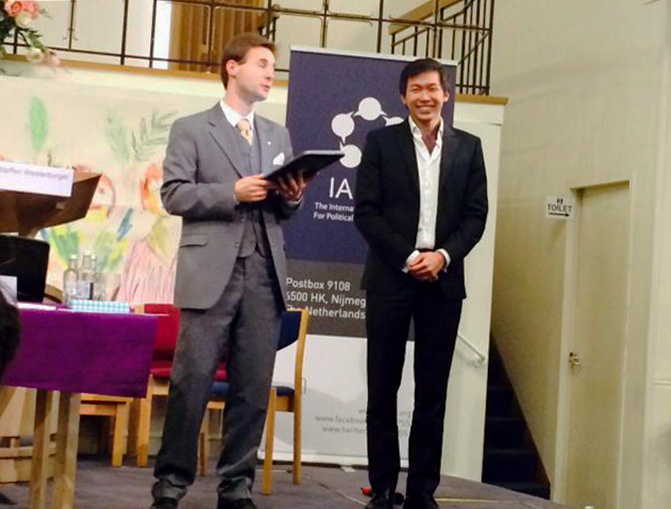On Prasenjit Duara’s book, The Crisis of Global Modernity: Asian Traditions and a Sustainable Future
On Thursday, 30 April
At the Singapore International Foundation
1. First, I would like to thank the Singapore International Foundation for inviting me to participate in this evening’s discussion of Prasenjit’s important new book, The Crisis of Global Modernity.
2. Second, I want to praise Professor Prasenjit Duara, the third Director of the Asian Research Institute (ARI). I have been associated with ARI since its inception as Chairman of its International Advisory Panel. I have enjoyed working with Professor Tony Reid, its founding Director, with Professor Lily Kong and with Prasenjit. Prasenjit is a world class scholar and an inspiring intellectual leader. Under his leadership, ARI has enhanced its reputation in the world and breathed new life into regional studies. I would be very sorry when he leaves us next year for Duke University.
3. Third, I would like to say a few words about the book. In his book, Prasenjit offers us an alternative to nationalist history. His alternative is “circulatory or transnational history”. Prasenjit’s study is framed by 3 developments. They are: (i) the rise of Asia, especially China and India; (ii) the crisis of planetary sustainability; and (iii) the decline of ideals, principles and ethics, once found in religions and political ideologies.
4. The rise of Asia, especially of China, India and ASEAN, is a world-changing development. And yet, in a strange way, it is a return to the past. In his book, When Asia Was The World, Stewart Gordon wrote that for a thousand years, from 500 to 1500, Asia was the world. It had the 5 largest cities of the world, all at the heart of great empires. Three of those cities, Delhi, Beijing and Istanbul still exist today. It was in Asia that mathematicians invented the zero and algebra. Astronomers tracked the stars more accurately than before and invented the astrolabe for navigation. Poets and writers produced literature that still resonates with us.
5. Prasenjit’s second point is indeed true. There is a crisis in planetary sustainability. The 3 environmental challenges we face are: climate change, loss of biodiversity and ecosystems and the degrading of the world’s oceans. The basic cause is the unsustainable patterns of production and consumption which can be described as the Western economic model. The bad news is that Asians have embraced this model with a vengeance. Our factories are carbon copies of those in the west. Our middle class wants to lead the same life style as their counterparts in the West.
6. Prasenjit’s third point is the decline of ideals, principles and ethics once found in religions and political ideologies. Ideology is dead but religion is not. Europe may have become a secular continent but religiosity is on the rise in Asia and in America. However, as a Methodist Bishop observed to me recently, Singaporeans may have become more religious but they have not become more spiritual. In other words, the rise of religiosity can co-exist with materialism. This may explain the popularity of Christian pastors who preach what is sometimes referred to as “prosperity gospel”.
7. What to do? Prasenjit looks for salvation to the traditions of Asia. The Taoist philosophy, for example, has a different way of understanding the relationship between the man, nature and the universal. I am sorry to disappoint Prasenjit when I point out that China’s economic development seems to be inspired, more by Deng’s dictum that it is glorious to be rich than by the Taoist view of man and nature.
8. In his final chapter, “Regions of circulation and Networks of sustainability in Asia”, Prasenjit focuses on ASEAN because of the role it plays in bringing Asia together. “Regional integration in Asia is centred on ASEAN”. “ASEAN has worked to enmesh the larger powers by means of commercial diplomacy that is expected to bring material benefits to both sides but also to tie these powers to the region.” Prasenjit believes that, in spite of all its deficiencies and weaknesses, ASEAN has outlined ways and means to deal with the problem of the commons, environmental degradation and unsustainable development. As a citizen of ASEAN, I thank Prasenjit for highlighting ASEAN’s positive role in region-building.
9. Prasenjit also attaches importance to the “civil society networks” which he believes can serve as watchdogs for inclusivity and transparency.
10. Finally, Prasenjit praises the role of international law because it has rules and principles which affect, “rights and jurisdictions across boundaries of territory, spaces and species, human rights, global finance, the seabed, outer space, Antartica, migratory birds, etc.” Who are the custodians of this space, which Prasenjit calls, “the sacred place”? In his view, it is the “networks of hope constituted by the coalitions of civil society, local communities and their allies”.
11. I have tried to summarise Prasenjit’s thesis. I hope I understood his message and got it right. It is now the turn of Professor Itty Abraham to critique it.
12. Thank you.





